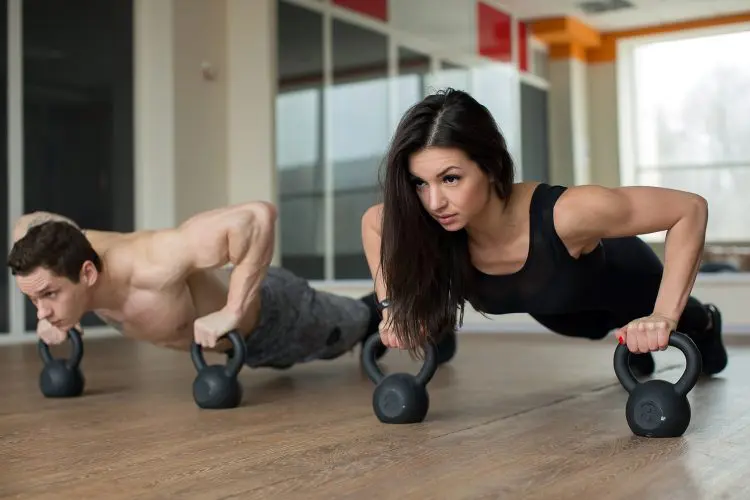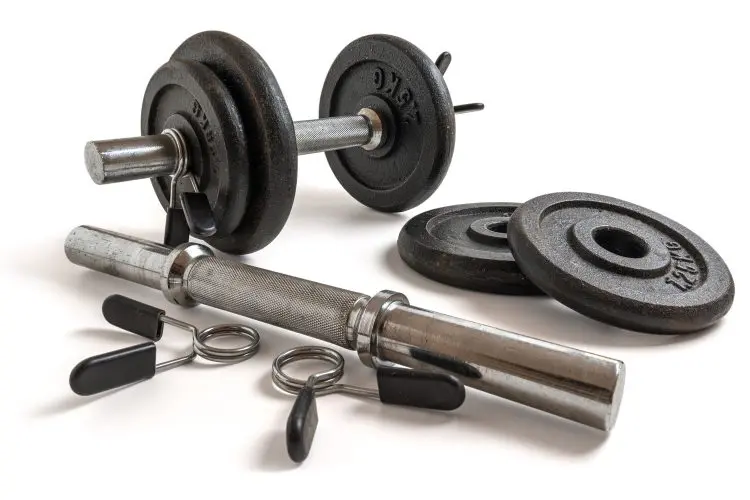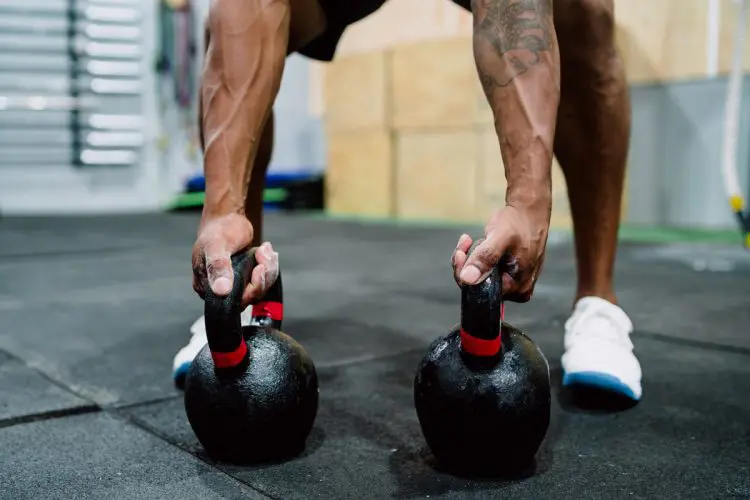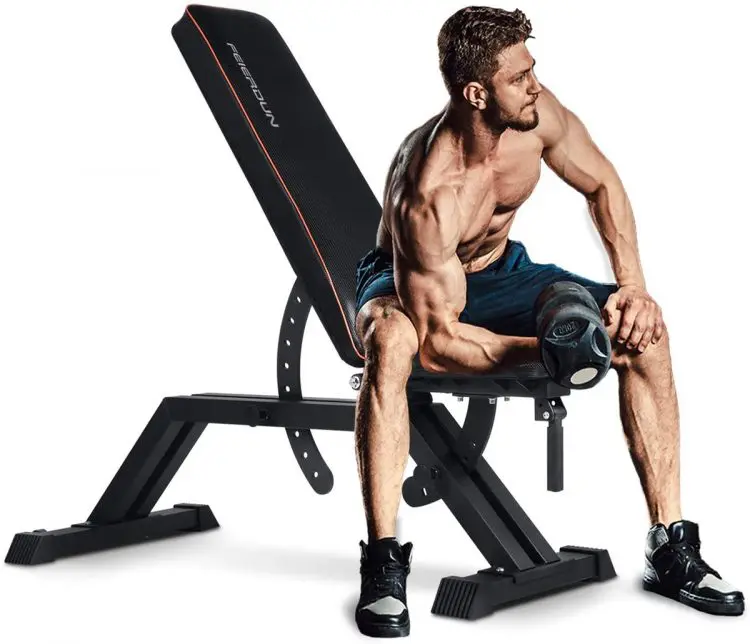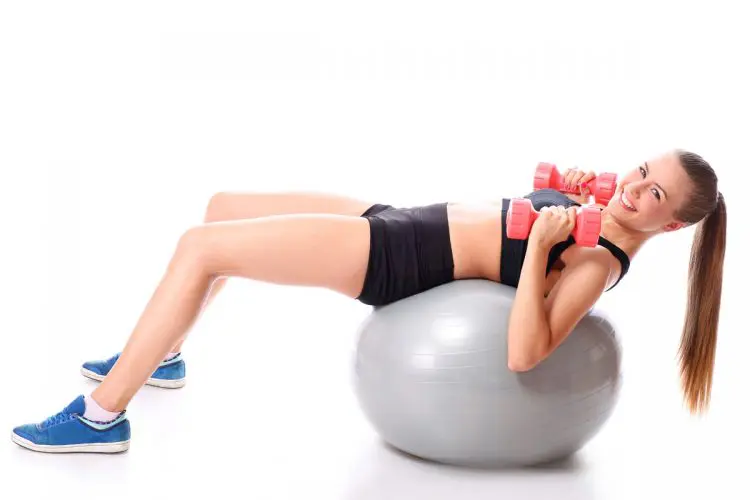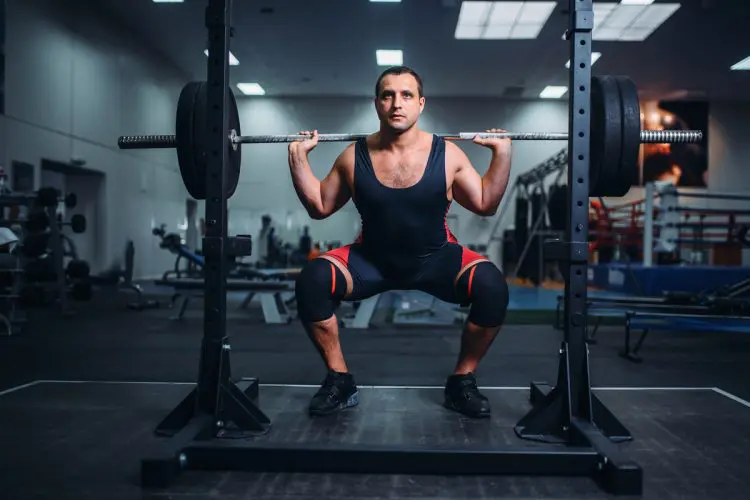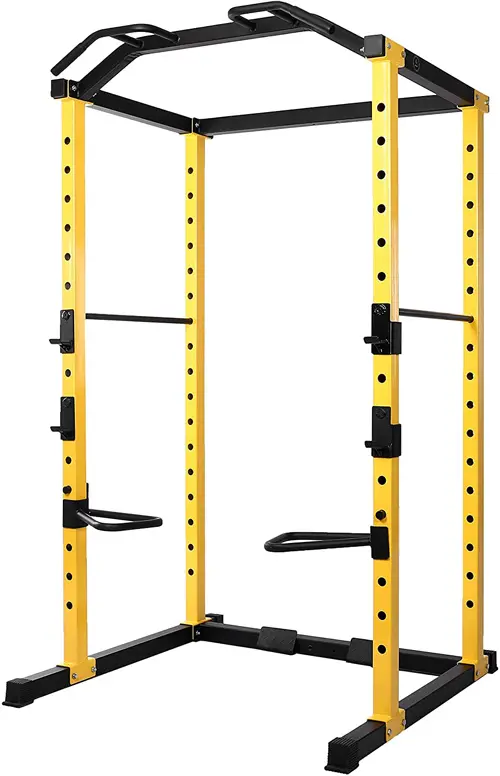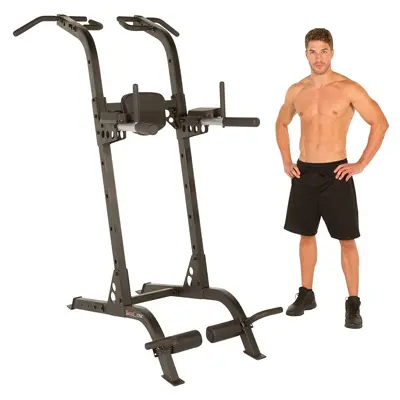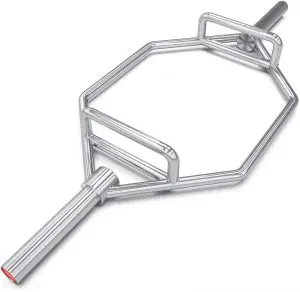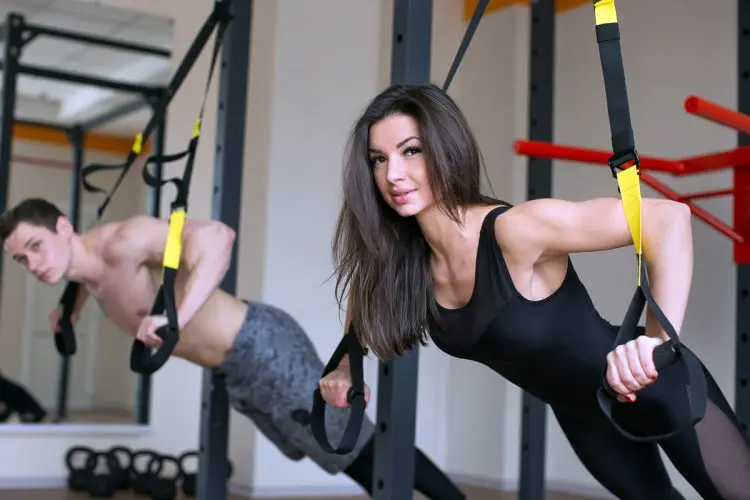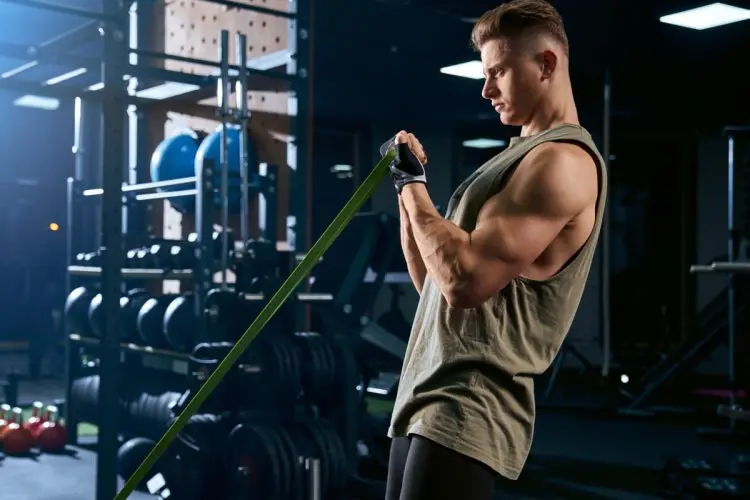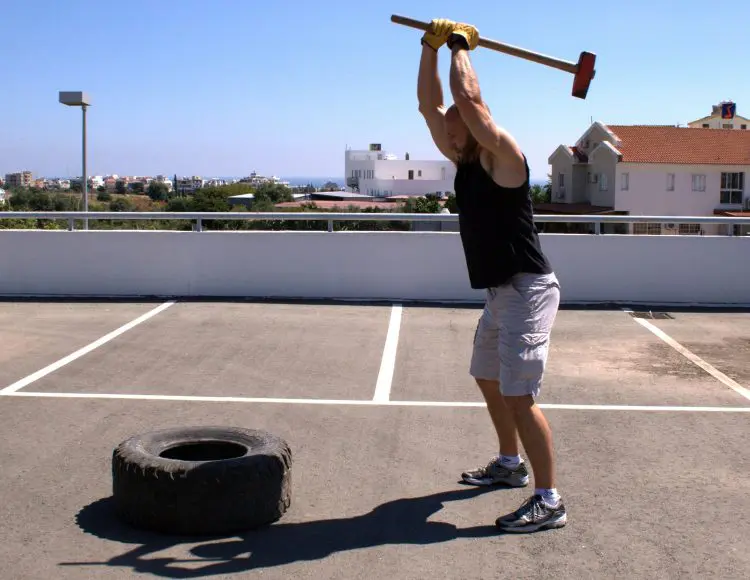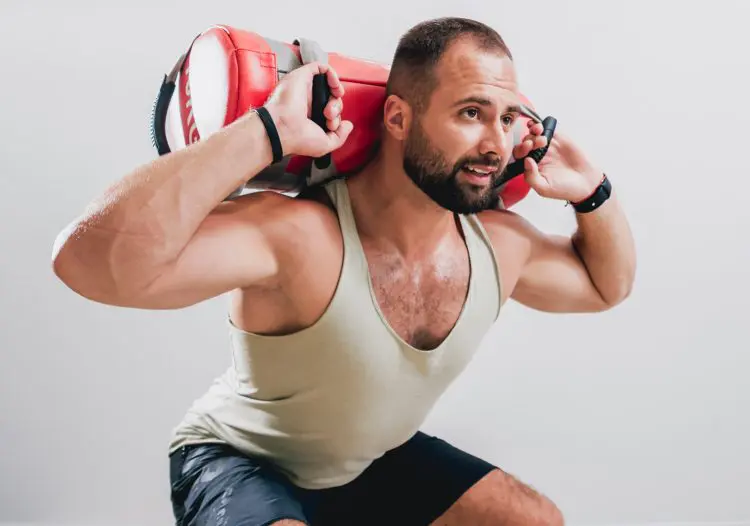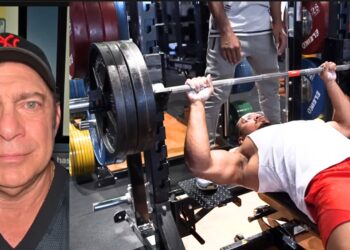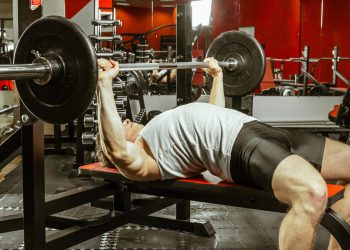While a lot of people are perfectly happy training in a commercial gym, a significant and growing number are not. It might be the music, the fact that some guy is always curling in the squat rack, or that you can’t get near the bench press on global chest training day (Monday). Working out in a public gym can sometimes be frustrating.
Of course, commercial gyms are not all bad. Where else would you find such a wide selection of exercise equipment, an abundance of space, and an almost inexhaustible source of training partners and spotters?
Whatever the reason, more and more people are quitting the gym and setting up a home training facility. This might be a garage or basement gym, a garden workout area, or just stashing some workout equipment in a spare room.
In this article, we’re going to focus on garage and basement gyms for building strength and muscle mass.
Why train at home?
Before we delve into the ins and outs of creating the ultimate garage gym, let’s discuss the reasons why you may prefer to work out at home. After all, creating a garage gym will require an investment of time and money, so you want to make sure that it’ll be worth it.
Level Up Your Fitness: Join our 💪 strong community in Fitness Volt Newsletter. Get daily inspiration, expert-backed workouts, nutrition tips, the latest in strength sports, and the support you need to reach your goals. Subscribe for free!
Time efficiency– one of the most significant barriers to regular exercise is lack of time. That’s hardly surprising when you consider how much time a trip to a commercial gym can take out of your day.
Going to the gym invariably involves:
- Packing your gym bag
- Commuting to the gym
- Getting changed
- Chatting with the staff and friends
- Doing your workout
- Waiting for the equipment you planned to use to be free
- A bit more chatting
- Waiting for a shower
- Having a shower
- Grabbing a post-workout shake
- Commuting home
A one-hour workout can end up taking three hours out of your day – and that’s a significant barrier to overcome.
Working out in your garage gym eliminates almost all of these time-consuming issues, and a one-hour workout really should just take an hour.
Your gym, your way – do you like to train shirtless? Is your favorite music profanity-laden death metal turned up to maximum volume? Do you want to shout and scream when you work out? If you train in a commercial gym, you won’t be able to any of these things, and if you do, you’ll soon be looking at a lifetime ban!
But, in your own gym, you are the boss, and you can train the way you want to. You can create the ultimate workout environment and won’t have to compromise on your choices or values.
Train when you want – with the exception of 24-hour gyms, most training facilities have rigid opening and closing times. Some even close early at weekends and don’t open at all on public holidays. Your garage or basement gym will be open and available 24/7, every single day of the year.
So, if you want to do a workout at midnight on December the 31st, you can. What better way to see in the New Year than a few sets of squats or curls?!
No need to share – some training systems involve monopolizing several items of equipment for long periods. Supersets, trisets, CrossFit, circuits – these workout methods mean being an equipment hog, and that can make you unpopular at a commercial gym.
Working out at home means you don’t have to share your equipment, and you’re free to use the training methods that would otherwise upset other users in a commercial gym.
Save money – commercial gym memberships can be expensive, and it’s also an ongoing cost. You’ll also probably have to keep paying your dues even if you don’t go, perhaps because you’re enjoying a deload week.
Plus, when you join a gym, you’ll often end up paying for facilities you don’t even want, need, or use. Setting up a home gym involves spending some money, but it’s a one-off cost. Plus, if you buy good quality equipment, it should provide many years of faithful service.
In the long run, setting up a garage gym can save you a whole lot of money.
Of course, there are a few downsides to working out at home. Possible drawbacks include:
- Having enough space
- Initial set up costs
- Possible interruptions from family
- The temptation to put your workout off until another time or day
- Missing the atmosphere of a commercial gym
However, none of these barriers need to be deal-breakers, and if you are really keen to set up a home gym, you should have no problem circumventing these problems.
Ultimate home gym set up considerations
Before you head out and start fulfilling your home gym equipment Wishlist, stop and spend a few minutes thinking about the following. This pause for thought could save you a whole lot of wasted money, time, and frustration.
Space
You don’t need a whole lot of room for a home gym, but you do need enough! Consider the space available before you start buying equipment. For example, if your space is small, you may need to use dumbbells rather than a seven-foot Olympic barbell. If your ceiling is low, you may need to rethink that full-sized power tower.
In short, you need to fit your gym into the space available and not try and force the equipment into an area that’s just too small.
Flooring
You’ll need a strong floor to support heavy strength training equipment. That’s what makes garages and basements better than spare bedrooms if you are serious about building muscle mass and strength. They tend to have concrete floors, so you already know they are strong enough.
You may also need to put down some kind of floor covering to protect both the floor AND your training equipment. This doesn’t have to be expensive gym matting; even an old carpet will suffice. If you are going to be doing heavy deadlifts or Olympic lifts, you may want to consider adding a lifting platform to your home gym shopping list.
Temperature control
One of the biggest ongoing expenses of operating a commercial gym is heating and cooling. Gyms are big, open spaces, which makes controlling the temperature very costly. Exercisers like to be cool when it’s hot outside and warm when it’s cold.
Your gym space won’t be as big, but you still need to consider how you’re going to regulate the temperature. Fans and heaters should be enough for a lot of garage gyms, but if you live somewhere incredibly hot or cold, you may need something more substantial.
Garages and basements can be cold, damp, and drafty, so you may also need some structural upgrades to make your home gym a comfortable place to train.
Of course, you could ignore all this and tough it out regardless of the temperature. There is nothing wrong with such an approach, but it could make your workouts more challenging at certain times of the year.
Security
Make sure your gym is secure and that you don’t make it easy for thieves to help themselves to your exercise equipment. This probably won’t be an issue for basement gyms, but garages usually open up onto public roads, so uninvited access could be a problem. Use good quality locks and install whatever other security measures you need to safeguard your gym.
Budget
Even setting up a basic garage gym can be a financially daunting prospect, especially if you are trying to set up the ultimate home gym straight off the bat. Avoid financial ruin by setting a budget before you start buying equipment and then stick to it.
If money is tight, focus on the must-have basics you need to work out, and forget about anything else until you’ve got more money. You can also save money by looking for used equipment on Craigslist, eBay, Amazon Marketplace, Offer Up, and your local paper. That’s an easy way to pick up a bargain.
Finally, before buying any item of training equipment, think about how much use you will get from it versus the cost. Ideally, you want to get a whole lot of workout bang for any bucks you spend.
For example, a barbell is a GREAT investment because you can use it for so many different compound exercises. However, a leg curl machine is much less useful as it’ll be expensive, take up a lot of space, and can only be used for one exercise.
Choose equipment that you know you’ll use and that has multiple functions. This will save you money and space.
It’s okay to upgrade
Don’t think that your garage gym has to be perfect from the get-go. Focus on getting the basics right, and then feel free to add and upgrade as required. This may mean you end up with a very minimalist set up initially, but that’s okay – you really only need a few pieces of fundamental workout equipment to get big and strong.
Ultimate Home Gym Equipment
What equipment do you need for the ultimate garage gym? That’s a tough question to answer because it depends on your budget, your training experience, your fitness goals, and how much space you have available.
So, instead of a shopping list, this section is all about providing you with ideas of the sort of things you COULD buy. Take a look and pick and choose according to your needs and wants. We’ve provided you with lots of options and alternatives so you should find plenty of useable and useful equipment ideas.
Barbell and weights
If there is one item of equipment that every home gym needs, it’s a decent barbell. Armed with nothing else, you can train every muscle group in your body and build impressive size and strength.
If you’ve got the space, an Olympic barbell is tough to beat, but, in a pinch, a smaller, lighter standard barbell can work too.
How much weight will you need? That depends on how strong you are. However, you can always buy more weights as you need them, so there is no need to buy a huge pile of plates straight away.
Dumbbells
While you can do a whole lot of exercises with a solitary barbell, adding a pair of dumbbells to your arsenal will significantly increase your exercise library. Fixed weight dumbbells are expensive and take up a lot of space, so adjustable ‘bells are probably the way to go.
Level Up Your Fitness: Join our 💪 strong community in Fitness Volt Newsletter. Get daily inspiration, expert-backed workouts, nutrition tips, the latest in strength sports, and the support you need to reach your goals. Subscribe for free!
There are several different types of dumbbells to choose from, including Olympic, standard, and selectorized, all of which are good choices for garage gym dwellers.
Kettlebells
While you CAN do most kettlebell exercises with dumbbells, many feel much more comfortable using a real kettlebell. On the downside, most kettlebells come in fixed weights, so you’ll need to buy a few different ones for your workouts.
That said, for fat burning and strengthening your posterior chain, kettlebell swings are hard to beat. So, if you only have space or budget for one kettlebell, make it a heavy one so you can do some super-effective swings.
Adjustable bench
The floor presses are a superb exercise, but if you want to train your upper body with more variety and in greater comfort, you’ll probably need an adjustable bench. Adjustable benches are very versatile and can be used for a lot of different exercises. They also allow you to work your muscles from a variety of angles.
Before buying a bench, make sure your intended purchase is strong enough to support the weights you anticipate lifting. Some home gym benches are stronger than others.
If you don’t have the space or the money for an adjustable bench, you can use an inflatable gym ball instead. While this will introduce an element of instability to your workout, a gym ball is light, cheap, and portable and could be a viable alternative for many pressing exercises. Plus, you can also use it for crunches and other abs exercises.
Squat stands
Unless you are prepared to go through life with skinny, weak legs, or have the space and money for a leg press, you’re going to need to include squats in your workouts.
Squat stands will save you from having to clean the bar from the ground to your shoulders every time you want to do a set. You can also use squat stands for shoulder presses and, if they’ll go low enough, for bench presses too.
While squat stands are light, portable, and versatile, they won’t help you if you cannot complete a rep. If you are serious about squatting heavy weights or training to failure, a power rack may be a better choice.
Power rack
A power rack, also known as a power cage, is probably the ultimate garage gym accessory. If you’ve got one of these, you can train in safety and also do almost any barbell exercise in comfort. Most also have built-in pull-up bars so you can train your lats too.
On the downside, power racks are tall won’t fit all training spaces. But, if you’ve got the room, a power rack is an excellent addition to your gym and will add a lot to your workouts.
Power tower
A power tower is a freestanding pull-up, dip, and abs training station. Some also have push-up bars. While you won’t need one of these if you’ve got a power cage, a power tower provides a great way to do some key bodyweight exercises.
However, like power cages, power towers are usually quite tall and may not fit a low-ceilinged garage or basement gym, so measure up before buying.
Trap bar
If all this talk of power racks and squat racks has left you thinking that you don’t have space for a home gym, consider a trap bar. A trap bar is hexagonal, and you stand between the handles to do what is best described as a squat/deadlift hybrid.
This allows you to really work your quads without the need for space-hungry squat stands or power rack. You can also use a trap bar for several other exercises, including farmer’s walks, bent over rows, and floor presses.
Suspension trainer
A suspension trainer is a pair of straps with a handle at one and an anchor at the other. You can use a suspension trainer to replicate many resistance training machine exercises and even some free weight exercises. They also make standard bodyweight exercises like push-ups and Bulgarian split squats a whole lot more challenging.
Medicine balls
While they’re far from being essential, medicine balls are useful for core and cardio training. You can lift, carry, and throw them, to work on numerous aspects of your fitness. On the downside, they can be expensive, but a good quality medicine ball should last for years. Avoid the gel-filled type as they are prone to splitting.
Jump rope
The treadmills, ellipticals, exercise bikes, and rowing machines are expensive and take up a lot of space. However, they are useful for warming up and for fitness building fat-burning cardio.
In comparison, a jump rope costs next to nothing is just as good for cardio and fat loss and takes up no space to store. A jump rope is the perfect garage gym cardio solution.
Gym mat
If you do any exercises on the floor, you’re going to need a gym mat. This will protect your back, elbows, and knees and protect the floor from your sweat too. Non-slip, non-stretch mats are best and are likely to be the most hardwearing. Make your mat last longer by always placing a towel on it.
Resistance bands
You can use resistance bands to replicate most free weight and even some machine strength training exercises. They’re light, cheap, portable, and easy to store, making them ideal for home use. On the downside, even the best resistance bands will wear out and snap, so you will need to replace them from time to time.
Very Low Cost and Free Garage Gym Equipment Options
No money for home gym equipment? No problem! Here are a few more equipment ideas that cost very little or are completely free!
Sledgehammer and tire
You can train your upper body and core while working your cardiovascular system using nothing more than an old SUV tire and a sledgehammer. Just hit that tire like it stole from you, remembering to alternate sides to prevent strength imbalances.
Tire fitters will often give you an old tire for free, and you don’t need a special hammer. A regular 8-10lb one from a hardware store will suffice.
Sandbags
While you can buy commercial sandbag training kits, they’re often expensive. Instead, you can make your own sandbags for just a few dollars.
Put some sand in some strong Ziploc bags and then load the bags into an old duffel or similar. Tie off the top with a short length of rope, and you are good to go. Simply add or remove Ziploc bags of sand to adjust the load. You can use a sandbag to replicate most barbell exercises.
Rocks
Humans have been lifting rocks and stones as a way to test and develop strength for thousands of years. Some stones are even famous – like the Husaffel stone in Iceland. Rocks can be used to replicate many barbell exercises, but you should exercise with caution as dropping even a small rock could damage your floor or hurt you if it hits you on the way down.
Rocks also feel heavier than the same weight loaded on a barbell. They’re harder to grip, unbalanced, and unwieldy, so start light.
Water gallon
The humble water jug is a very cost-effective exercise tool. The ones with handles are especially useful, but any water jug will do. You can buy empty water jugs for a couple of dollars and then fill them with water, gravel, or sand to make very functional weights. However, avoid dropping them as they’ll split and spill their contents all over your floor.
Make the Ultimate Home Gym – Wrapping Up
A lot of people believe that the only place to work out is the gym, but this really isn’t the case. In fact, that’s just one of the places you can exercise, and there are several viable alternatives.
Working out at home offers some very real advantages over gym training. For starters, a home workout will invariably take less time out of your day. But, on the downside, setting a garage gym takes time, effort, and money. Home training is not for everyone.
Use the information in this article to help you set up the ultimate garage gym. Remember, you don’t need all the equipment we’ve mentioned. In fact, you can have great workouts in a very minimalist garage gym. After all, your body can’t tell if you are using a state-of-the-art Olympic barbell or a rock; it just knows tension and work, and it doesn’t care how much money you’ve spent on equipment. Work hard, and you WILL get results!


